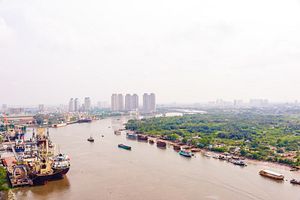In the battle of perceptions the Mekong River has always held sway as the greatest waterway in Southeast Asia. Novelists have romanticized it, scientists have fawned over it and travelers have made it one of the great tourism destinations in the world.
More importantly it is the bread basket for about 70 million people who depend upon it. Hence when unthinking governments conspire with business to dam, build and dredge the Mekong in the name of profit, the reaction deserves to be as great as the river itself.
This has been the case for the Xayaburi and Don Sahong dams.
Sadly the attention-grabbing Mekong tends to overwhelm the importance of other rivers and the issues they face. The Saigon River will never match the Mekong in the majestic stakes but its place in history, its wildlife, rugged backdrop and strategic importance for Ho Chi Minh City make this an extremely important waterway.
Vietnamese scientists now say the river is dying, declaring in state-sanctioned media, “the pride and sustenance of Ho Chi Minh City is severely contaminated with wastewater and urgent steps have to be taken to save it.”
Tests were conducted between the rainy season of 2011 and the dry season the following year and Nguyen Van Phuoc, director of the Institute of Environment and Natural Resources at the Vietnam National University, said the river had failed to meet national standards.
Predictably, downstream areas had fared worse due to the stronger impact of domestic and industrial wastewater in HCMC and in neighboring Binh Duong province. The numbers are staggering.
Results showed domestic wastewater was the most serious cause of pollution contributing 62.2 percent of total sewage flowing into the river. About 50 industrial parks and clusters along the river were discharging more than 100,000 cubic meters of wastewater a day. Although most have treatment systems, many directly pumped untreated waste into the river. Animal farms were releasing more than 2,600 cubic meters of waste that contained harmful bacteria.
According to the official press, HCMC has just one treatment plant capable of handling 140,000 cubic meters a day while households alone could pump more than 1.2 million cubic meters of untreated sewage into the river each day.
The 256-kilometer Saigon River is a tributary of the Don Nai, which provides water for about 20 million people and access to the South China Sea – as well as the seaside port and resort at Vung Tau, a former playground for the French colonialists and the local elites.
Government departments, farming institutes and universities say urgent upgrades of wastewater treatment plants alongside improved monitoring, improved use of water discharge to flush out polluted waters and factory relocations are needed to protect what’s left of the river’s biodiversity.
If they fail then the Saigon River could become an unwanted benchmark for the hundreds of communities that dependent upon nearby rivers imperiled by similar threats. Many of them feed into the Mekong itself.
Luke Hunt can be followed on Twitter at @lukeanthonyhunt.

































